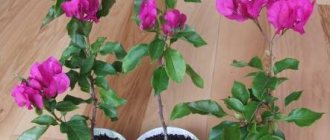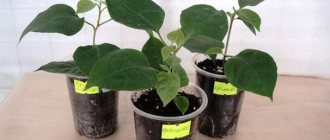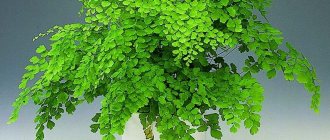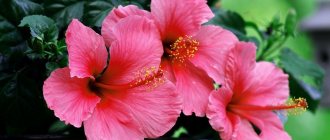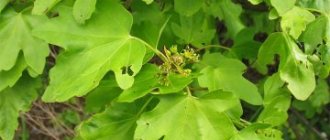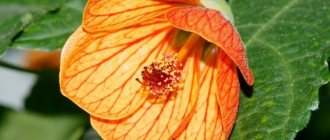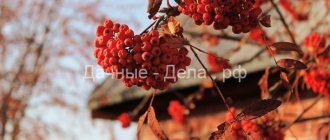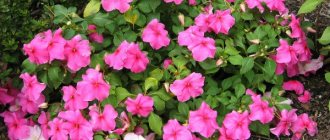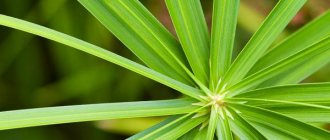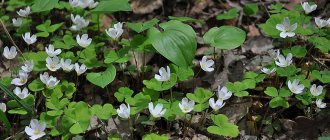Garlands of elegantly blooming bougainvillea vines are picturesque and incredibly colorful. Perhaps that is why, at the very first acquaintance with the overseas beauty, Russians, not spoiled by the extreme riot of colors, instantly associate with the breathtakingly spectacular holiday - the Brazilian carnival. That's right! Your associative thinking did not fail, since the birthplace of the festive bougainvillea is the distant and mysterious South American country of Brazil. Many of our flower growers have successfully mastered the secrets of growing exotic plants. However, they still look warily towards the temptingly spectacular bougainvillea plant, the cultivation of which would be another step for them on the path to realizing their dreams. And this dream is a man-made creation in your home of unearthly beauty and a festive atmosphere.
The Europeans named the ornamental flowering plant, which was striking in its novelty, after the French traveler Comte de Bougainville. In common parlance, the heroine of our story is called a “paper flower” due to the similarity of the bracts to crumpled colored paper.
The tropical flower surprisingly quickly took root in the European climate. Bougainvillea has won one of the most honorable places in the flower beds and gardens of hospitable Europe. Nowadays, the exotic beauty of bougainvillea is more often found outdoors, while breeders have taken the trouble to grow hybrids for indoor use.
Our article will serve as a road map for growing bougainvillea at home for Russian daredevils who have decided to acquire a tropical miracle at home. A short guide will guide beginners and experienced gardeners in a sea of questions about how to care for bougainvillea.
Biological description
Before we begin to understand the intricacies and nuances of the courtship procedure, let’s take a closer look at the plant and its progenitor.
Bougainvillea (Bougainvillea) is a member of the Nyctaginaceae or Nocturnal family. Contains 15 species, of which only a few are adapted for indoor conditions, most of them are Brazilian species. In its natural habitat, it is an evergreen climbing shrub or tree, the climbing branches of which can reach 5 meters in length.
The woody, thorny stems of the plant are equipped with short, sparse thorns for traction with support. Indoor hybrids, if you are too lazy to prune regularly, can imperceptibly transform into impenetrable thickets on your window.
The plant owes its popularity to its long flowering period: from spring to late autumn. Bougainvillea, which has safely acclimatized in Russian conditions, will delight the eye with its blooming outfit for 9 months in a row! Surprisingly, the compact flowers are completely modest and invisible against the backdrop of defiantly bright bracts, which have raised the decorative value of the plant among members of the family.
The bracts of various shapes and colors reach 6 cm in diameter. Together, they form a dense dome that overshadows the leaves and branches of the tree in the literal and figurative sense of the word. Breeders work tirelessly to create new hybrid varieties with the most incredible colors and shades. Classics of the genre - pink, red and purple bracts. Unlike faded flowers that quickly fade, bracts remain fresh and attractive for a very long time.
The narrow, smooth leaves of the plant are not of particular value. They are hidden from prying eyes for most of the year behind the undeniably dominant flowers.
One of the latest achievements of breeders was a variety with bracts of two colors. The scientists' real highlight was bougainvillea, a chameleon that changes color during the flowering season.
Bougainvillea: care and maintenance in open ground
Bougainvillea is a Brazilian vine. Its branches are so flexible that thanks to them the plant can be firmly fixed to the support. The flowering period occurs at the end of spring - beginning of summer.
A flowering bougainvillea bush outdoors is a source of pride for any gardener.
For your information! Bougainvillea is too thermophilic, so it can grow in open soil throughout the year only in regions with a mild climate (for example, in the Crimea). For cooler climate zones, the solution would be to transplant it into tubs for the winter.
There are about 20 varieties of bougainvillea in the wild. Some of them are capable of reaching quite large sizes (up to 10 m in height and above).
An interesting fact is that the bright flowers of the plant, which can have different colors and look more like paper, are actually stipules. Real flowers are small and unsightly, usually white and yellow in color.
The plant's showy flowers are the colorful stipules.
Basic rules for success
The well-known secrets of longevity, long flowering and health of the beautiful indoor bougainvillea when caring for it at home are the correct ones:
- temperature - warm in summer, cool in winter;
- lighting is the brightest possible;
- watering - plentiful in the spring-summer season, minimal in winter (the lump of earth should be almost dry);
- air humidity - in a heated room, the foliage cover must be sprayed;
- transplantation - if necessary, in early spring;
- propagation by stem cuttings, layering and seeds.
Popular types and varieties
Among the few species of bougainvillea, only a few can be grown at home. The most commonly found Brazilian species are Bougainvillea glabra and Bougainvillea spectabilis. But the plant varieties are amazing in variety. They differ not only in shape, color, number of bracts, but also in the color of the leaves.
Bougainvillea sanderiana with purple bracts and abundant flowering is considered one of the best. The most common varieties include bougainvillea 'Vera Deep Purple' with large fuchsia-crimson bracts and abundant flowering. Fans of variegated leaves will like bougainvillea 'Orange Ice', which amazes not only with the bright orange color of the bracts, but also with variegated variegated leaves. Interesting leaf color is also characteristic of the 'Mini thai' variety. Bright green leaf blades are framed by a fugitive border. In addition, the plant is compact and forms a well-leafed crown.
Bougainvillea 'Double red' with red flowers looks very impressive thanks to its double bracts. Among the interestingly colored varieties, bougainvillea 'Snowcap multi' stands out, the bracts of which have a bicolor white and pink color.
Care
Under normal indoor conditions, growing bougainvillea is difficult without specific knowledge and basic skills in floriculture. A “paper flower” in conditions unusual for its nature needs due attention to itself, monitoring the dynamics of development and simply a positive attitude.
Let us reveal an important secret to beginners in floriculture. It consists in the fact that you should not disturb the plant by moving it to a new place. The logical conclusion is that you should carefully approach the issue of choosing a place for the permanent location of bougainvillea even at the time of purchase. No matter how ideal the care, the flower is at risk of simply withering when moved. Take advantage of the opportunity to place the pot on a window facing south. Here the tropical plant will enjoy the abundance of light and warmth, almost like in its homeland. If this is not possible, a west window would be a good option. Air circulation will be useful, but without cold drafts. It is also undesirable to disturb the shoots, directing them at your own discretion. It will be much safer to form a crown using pruning.
Knowing some key points, you can begin a fascinating walk through the pages of our article, dwelling in detail on each of the mentioned rules for caring for bougainvillea.
Pruning and shaping the crown of indoor bougainvillea
When growing bougainvillea at home, you should prune it every year. This will contribute to the preservation of the decorative appearance, the formation of the bush and greater formation of flower ovaries. The procedure is done in autumn or winter. The stems are cut to half, thus activating the growth of side shoots. Some gardeners prune indoor bougainvillea in the spring. This promotes the development of a dense bush and the removal of crooked, diseased, thin and unnecessary shoots. In summer, pruning is carried out after the flowering period. This stimulates the re-formation of flower ovaries. It is not recommended to prune three or four year old branches. Some varieties of bougainvillea can be formed into various shapes by tying shoots to special supports of different configurations: an arch, a ball or a heart. Pruning is an important step in bougainvillea care.
Bougainvillea varieties
There are 14 species of bougainvillea in nature, but gardeners cultivate only two of them:
- Bougainvillea is naked. This is a vine-like plant with glossy round leaves and thorns on the shoots. The bracts are white, bright red, purple or pink and have small yellow flowers that are located on them. The flowering period begins in April and lasts for a month. Under natural conditions, vine shoots can be up to 6 meters long, but in greenhouses and home cultivation their length does not exceed three meters.
- Bougainvillea is beautiful . A fast growing plant with velvety oval leaves. The flowers are collected in paniculate inflorescences of two or three, located on bright bracts of pink-green, pink-violet or red. The central stem can grow up to 15 m in length.
In addition to these two species, there are a huge number of different innovative varieties that differ in the color of their bracts. It can be bright orange, coral, crimson, pink, rich yellow, snow white, purple, ruby red and other colors.
Temperature
The heat-loving “Paper Flower” is surrounded by comfort in summer if the temperature varies between 23 - 30°C. This amount of heat best stimulates flowering. In hot times, the plant will appreciate a long stay in the fresh air or at least sufficient ventilation.
In a heated residential room, bougainvillea will not be able to get a full rest even once a year, since the start for it to go into rest is the descent of the column on the thermometer scale below 16°C. It is difficult to achieve this value in an apartment, especially in one where children live. That is why the bush continues to bloom on the windowsill all year round, which can weaken it. Concerned about replenishing the strength of their pet, flower growers tend to place bougainvillea for winter rest in an unheated loggia or on the balcony. Here, a cool winter at a temperature of 12 to 16 degrees will create conditions for the plant to lay a large number of flower buds. This measure will lead to effective lush flowering by the spring season. However, even here you need to be on alert so as not to let the temperature drop below the critical temperature. Already 7°C can be disastrous for the Nyctaginaceae family!
It is important to eliminate the possibility of sudden temperature fluctuations so as not to jeopardize the health of your homegrown beauty. If the balance of heat optimal for flowering in summer has not been established, the bracts will not be able to acquire the inherent brightness of color and delight their admirers.
Rest period
In winter, bougainvillea needs special care. The plant does not feel well without the sun, so all processes slow down. The tropical beauty becomes sleeping. She needs to be provided with a lighted but cool place, with a temperature of +10–12 degrees or lower, up to +5.
- In warm regions, bougainvillea can easily overwinter on a glazed balcony.
- In the northern regions it is more difficult to create optimal conditions.
You can place it almost close to the cold window glass and separate it from the rest of the room with a screen to keep it cool. When kept cold, a moderate level of air humidity is sufficient. It is necessary to cancel water procedures. Watering is limited to a minimum, fertilizing is stopped.
In southern latitudes, bougainvillea is left to spend the winter on a protected veranda or loggia, at temperatures of +5 degrees and above.
In order for the plant to comfortably survive the winter, it is necessary to insulate the roots. Wrap foam rubber, batting or other insulation under the flower pot and lay polystyrene foam underneath, mulch the top of the soil with peat or sawdust. But you can and should spray bougainvillea foliage if the temperature is about +18–20 and above. Otherwise, dry air and heat will lead to leaf fall. During a warm winter, bougainvillea may bloom, but this is not good for the health of the plant. It will not have time to rest and accumulate strength to flourish in the summer.
Even during dormancy, bougainvillea needs a lot of light, even in excess, especially for variegated varieties. So add artificial lighting. Regular incandescent lamps are not suitable. Install special phytolamps, gas-discharge or fluorescent lamps. LED lamps are most efficient.
As spring approaches, dormant bougainvillea needs to be awakened: the temperature is gradually increased, and the soil is moistened more.
In winter, the plant sheds its leaves. During this period, the air temperature should be lowered. Reduce watering and spraying.
Lighting
The ability to choose the right place with optimal natural light, and, if necessary, adjust the value with artificial light is a task equivalent to balancing the temperature regime for indoor plants. It happens that those who “tamed a pet”, being irresponsible about the issue of light, simply ruined the plant, without waiting for the dream of the charm of a flowering tree to come true.
For the intensive development of bougainvillea, it is extremely important to provide bright light. It is one of the few plant species whose life directly depends on the amount of sunlight. For this purpose, choose the sunniest place for the flower, ideally a south-facing window sill. You should know that during daylight hours, bougainvillea should receive plenty of sunbathing for at least 5 hours. You should not be afraid of the scorching rays of the midday sun and getting burns. The South American ultraviolet lover will fully grow, develop and amaze the imagination of mankind with the brightness of the colors of the bracts only when she is given plenty of light. Poor lighting will inevitably lead to stretched stems, faded green foliage and a cessation of flowering.
However, there are nuances in the topic of bougainvillea lighting, depending on the time of year and periods of flower activity. It will need the maximum amount of light from the very first month of spring until October, that is, for the flowering period. During its well-deserved rest, during the winter dormancy period, the plant will feel comfortable in a place shaded from sunlight.
Signs and superstitions
There are many interesting stories, signs and superstitions associated with the evergreen and ever-blooming beauty Bougainvillea or the “miracle flower”, as this amazing plant is often called in Europe. No wonder. Just think about the fact that its lush, colorful clusters of inflorescences that decorate the crown all year round are actually not flowers, but leaves.
According to the ancient Indian legend, Ataahua, as the indigenous people of South America called Bougainvillea, was once a beautiful girl. The evil witch envied her beauty and turned her into a vine with inconspicuous small flowers. But the gods took pity on the unfortunate woman and allowed her to “bloom” with leaves, but continuously.
Bougainvillea, or as the plant is popularly called, Paper Flower, is quite rarely grown in apartments. It is more of a shrubby plant found in the southern regions. But if you have bougainvillea in your home flower garden, consider yourself very lucky. A paper flower, according to signs, has the highest ability to attract money.
Signs for the home
There are a huge number of signs and superstitions associated with Bougainvillea. For example, many believe that this plant helps a person to be in the right place at the right time and not miss his chance. The main thing is to ask the flower for this and take good care of it.
The bright parts of Bougainvillea - the bracts or covering leaves, as they are also called - are not flowers. Its real flowers are inconspicuous, small and inconspicuous, lost in the surrounding of larger and more picturesque bracts.
Bougainvillea is believed to bring wealth and profit to the home. It is not for nothing that Asians use this flower in the interior design of bank premises. They believe that he can enhance cash flows, secure investments and reduce risks in financial transactions.
But we must remember that in money matters, the South American beauty helps only those who are not lazy, improve themselves, and raise their qualifications. And in order to enhance its positive meaning and get rid of competitors, you can make a kind of talisman in the form of a sword from metal coins and put it in a pot or tub next to the plant.
The magical properties of Bougainvillea also work to protect the house and its inhabitants. Therefore, in southern countries, where this evergreen shrub grows freely in open ground, Bougainvillea hedges and house walls densely entwined with this beautiful vine are so popular.
Watering
The watering regime for bougainvillea is directly related to periods of activity. In spring and summer, during the period of intensive growth, the plant is watered abundantly. To avoid mistakes, test the soil mixture: it should be slightly moistened all the time, but not soggy. You should start watering immediately after the top layer of the earthen ball has dried at least halfway. By average, watering is carried out 1-2 times a week.
Water is poured into the pot until it seeps through the holes in the bottom.
It is important to remember the natural living conditions of the flower. In its natural environment, it grows on rocky areas of soil, where stagnation of moisture is simply impossible. Therefore, a moisture-loving home bush should not experience waterlogging of the substrate. You need to help him in this matter by draining excess moisture from the pan.
When autumn comes, the volume and frequency of watering is reduced, which helps prepare the bush for a period of rest and recuperation. From November until spring, bougainvillea is watered rarely and sparingly. At the same time, it is important to prevent the earthen ball in the pot from drying out completely. Average watering frequency at this time of year: once every 2-3 weeks. If the room is warm, then you need to water it a little more often. It happens that in winter the bush sheds its leaves completely. This will be your cue to stop watering until the dormant season is over. For irrigation use settled tap water.
Flowering period
Bougainvillea requires the following conditions for lush and long flowering:
- coolness (+10–12, can be as low as +5) during the winter dormancy period;
- plenty of light (4-5 hours of direct sun required);
- a cramped pot;
- food containing phosphorus and potassium.
You can encourage bougainvillea to bloom by giving it a drought. If the plant does not form buds, try stopping fertilizing and severely limiting watering. The flower will begin to form buds from shock, after which water and fertilize the bougainvillea again so that it does not weaken.
Sometimes flowers appeared at the end of spring, withered, but there were no new ones. In this case, you need to cut off the faded branches, then the second wave of flowering will begin.
Air humidity
Like any subtropical crop, bougainvillea prefers high air humidity, even when in a Moscow apartment. Regular spraying of the plant with soft water that has stood for at least 2 hours will help create conditions close to tropical ones. Therefore, take the trouble to arm yourself with a spray gun.
During flowering, the air is humidified selectively in the area of the bush, preventing droplets from falling on the surface of the bracts. During the dormant period, feel free to irrigate the inner and outer surfaces of the leaves for the benefit of the entire plant.
To create optimal air humidity, you can use other well-known methods, for example, an electric humidifier. It will be effective to place a pot with a flower on a tray with moistened pebbles or expanded clay. You can place a vessel under the bush, for example, a glass brazier filled with water. Remember that the larger the water surface area, the higher the humidity level can be achieved.
All efforts to ensure comfort will benefit your pet and will turn out to be a treat for the eyes.
Planting bougainvillea at home
Bushes should be planted in pots up to 5 liters. The larger the volume of the pot, the worse the flowering, since indoor bougainvillea begins to actively form leaves without forming buds. The soil for planting can be prepared independently or purchased at garden stores. To prepare the soil, mix coarse sand, leaf soil and turf in equal proportions, add a little expanded clay or broken brick. The soil must be nutritious and moisture-absorbing. The acidity is neutral or weak. A prerequisite for planting is to place a drainage layer at the bottom of the pot. The larger the volume of the container, the thicker the drainage layer should be.
Transfer
With the arrival of spring, the dormant stage comes to an end and the bush begins active growth. The green mass, roots and shoots grow intensively. At this very moment in early spring, it is recommended to replant bougainvillea.
Young “pets” grow rapidly. In close to ideal greenhouse conditions, the height of the bush increases to 3 meters in one year. It is noteworthy that in a spacious container your flower will grow long stems and branches. A cramped pot will provoke extremely lush flowering, while the height of the bush will change only slightly. At a young age, the plant is replanted annually. Thus, the proper level of nutritional value of the soil mixture is achieved.
An adult bougainvillea can hardly tolerate the worries associated with the transplantation procedure. It can get sick, lose its leaves and stop flowering altogether. Therefore, mature plants are replanted every 3-4 years. In this case, they prefer the method of transferring it into a container with a large diameter and try to avoid injury to the root system. It is important to check whether the root collar is buried in order to correct the situation in time.
The free gap that appears between the earthen lump and the walls of the pot is filled with new soil and only slightly pressed down, without compacting, but also without leaving voids. The bush is watered and placed for several days of rest in a shaded corner. After the roots have settled into their new home, the flower is returned to its usual place.
The weighty lashes of an adult plant along with flowers are quite heavy and need support. Bamboo or other strong supports are installed in the pot. To properly form a young bush, you will also need to install a bracket in the pot or stick a special ladder into the substrate.
Compliance with the rules for using the following three attributes of transplantation will allow you to carry out the process safely, and the flower will easily survive stress and quickly adapt.
- Pot. It is better to choose a deep pot that allows roots to develop. Mistakenly, some beginners prefer choosing an overly large flowerpot. According to the rules, the diameter of each subsequent container should exceed the previous one by the thickness of two fingers, about 3 cm. Too large a volume provokes stagnation of moisture and rotting of the roots, which is difficult to combat. When replanting into the previous container, wash it thoroughly and disinfect it. Shorten the roots enough to make them more comfortable.
- Drainage. Under natural conditions, bougainvillea grows on rocky soils. At the bottom of the pot, it will definitely need a generous layer of drainage: expanded clay, crushed stone or broken red brick.
- Priming. For a luxurious Brazilian beauty, prefer a store-bought special substrate. If this is not possible, you can make your own mixture of sand, compost, turf and leaf soil in a ratio of 1:1:2:2.
Caring for Bougainvillea at home
The shrub is unpretentious in care, but there are clear recommendations on this issue.
Location and temperature
In its homeland of Brazil, the plant comfortably tolerates temperatures from + 5 °C. In other conditions, bougainvillea dies. The subtropical zone of the Caucasus allows you to grow shrubs in open ground. In some cases, when it gets colder, it is covered with film for prevention.
Central Russia is a territory where shrubs are grown in closed ground conditions. These can be greenhouses or greenhouses. If living conditions allow, then the option of planting bougainvillea in your home is also possible.
Bougainvillea at home requires compliance with clear rules for caring for it.
If you care for the plant correctly and provide it with growing conditions as close to natural as possible, then it can bloom several times during the year.
Creating natural light
In this case, a window sill on the south or west side of the home is suitable. Five hours a day is the maximum period for leaves and flowers to be exposed to direct sunlight. On a brightly lit afternoon, there is no need to hide the plant in the shade.
If this condition is not met, one cannot expect intense coloring of the perianths and their active growth. As a result, a lover of indoor greenery will receive a shrub with pale foliage and elongated shoots.
A window sill on the south or west side of the home is suitable for bougainvillea.
Draft protection
Bougainvillea does not tolerate them. This factor does not mean keeping the plant in conditions of complete lack of ventilation. The room where the bush is located should be regularly ventilated.
The main prohibition when ventilating it is that air flows do not enter the plant.
In warm weather, it is recommended to place it in an open area warmed by the sun, where there are no drafts.
Be careful when moving
Bougainvillea is a beauty with character, so it can be hostile to a sudden change of environment. During flowering, she will react especially sharply to other nuances of living. Under worse conditions, the shrub will say goodbye to its flowers and leaves. Then it can be restored if you return the bougainvillea to its comfortable zone.
Correct temperature
Spring and summer are the period when the room needs to be kept warm within 22-25 °C. During this time period, bougainvillea begins to actively grow.
In winter, it enters a dormant season, which requires a temperature of +12-16 °C. This reduction in heat in the room is necessary to create maximum conditions for the formation of buds.
In spring, bougainvillea will reward the care of the owner of the home with vigorous flowering.
If it is impossible to create such a temperature regime in winter, you can use a fluorescent lamp or phytolamp for additional lighting. The advantage of such a trick will be the imitation of artificial rest. Its disadvantage will be the weak flowering of bougainvillea in summer.
The room where the flower is located must be systematically ventilated, but be sure to protect the bush from drafts
Air humidity
The requirement of high humidity in the plant’s habitat is its small weakness. To create it, you need to regularly spray the bush. Soft, settled, filtered water is the ideal option in this case.
The correctness of spraying depends on timing indicators:
- Blooming season. During this period, it is not the bracts and leaves themselves that are sprayed, but the air surrounding them.
- Time to rest. The plant will appreciate being treated with water on both sides in its dormant state.
It doesn't hurt to use a container of liquid to increase the humidity in the bougainvillea's habitat. It is enough to place it next to the pot or use wet pebbles for the tray. If possible, it is recommended to purchase a humidifier.
The crop needs high air humidity
Watering
Spring and summer are the time to water the plant abundantly. It is important not to overdo it in trying to moisten the soil. Repeated watering is carried out after half the top soil layer has dried.
It is recommended to perform the procedure 1-2 times a week as follows:
- pour water until it flows out of the drainage holes;
- remove excess moisture from the pan to avoid stagnation;
- repeat watering every week in summer and two weeks in autumn/winter.
Cool indoor temperatures mean less frequent irrigation of the soil. Watering is canceled if the plant has dropped its leaves at rest.
Top dressing
For this purpose, you need to purchase liquid fertilizers. Potassium-based products are useful. phosphorus and iron. They will give flowering plants the opportunity to form a large number of buds.
You should strictly follow the instructions for the drug. If there is an excess of nutrition, the shrub will not please with lush flowering.
Land for Bougainvillea
The soil for the plant should be nutritious and light in texture. Its air and moisture permeability is important. If we are talking about an indoor option, then it is better to opt for a universal soil. Its parameters must correspond to pH values from 5.5 to 6.0.
The substrate can actually be prepared at home. His recipe:
- Preparation of the composition. For it you will need to take 2 parts of turf and leaf soil, 1 part of coarse river sand and humus. The looseness of the composition and its ability to prevent fungal infections will be created by chalk, ash, vermiculite and a couple of pieces of charcoal.
- Steaming the substrate. It can be replaced by simply pouring boiling water over the mixture. This must be done in order to ultimately obtain a product that is free from viruses, parasites and infections.
- Drying the mixture. It is carried out by laying the substrate on a tarpaulin. It will be more convenient to use a special dryer.
Pot
A large pot is not suitable for placing plants in it for the first time. If you ignore this warning, the bougainvillea will grow roots at an accelerated rate. As a result, the shoots will also become more massive and interfere with flowering.
The thinness of the roots will not allow them to adapt to a large volume of soil, and they will sour. The width of the pot should exceed its height. Its bottom needs to be covered with a large layer of drainage. With a height of 3-4 cm, it should consist of polystyrene foam, expanded clay and large pebbles.
The container should be high, but not too wide
Replanting Bougainvillea
The active life of the plant begins in early spring. It was then that the time for transplantation work came. When young plants grow actively, their height in greenhouse conditions will be three meters. It still depends on the size of the pot which "controls" these parameters.
New specimens need to be replanted annually. Without such actions, the nutritional value of the soil is then difficult to restore. If the bougainvillea is already “adult”, the number of transplants should be reduced to once every 3-4 years. Otherwise, it will begin to hurt, will not bloom and will shed its leaves.
Replanting Bougainvillea
Rules for replanting a plant:
- Accuracy. To avoid damage to the roots, use the method of transferring an earthen clod along with the plant. For this, an additional and slightly larger pot will be useful.
- Correct placement. There is no need to deepen the root collar into the prepared soil. A new substrate will be needed to fill the resulting free space.
- Moderate compaction. It is not recommended to compact the soil too much. However, the presence of voids in the pot is unacceptable.
- Watering. There is no need to be zealous when irrigating. It is enough to water the transplanted plant moderately.
- Placement in partial shade. Two days are enough for bougainvillea to adapt to the new substrate. After the announced actions, the pot with the plant is returned to its original place.
Bougainvillea blooming
The bright and long-lasting fragrance of the inflorescences of this gift from tropical lands is its main trump card. Bougainvillea buds begin to form in winter. At the beginning of May they form an impressive bouquet.
Due to its lushness, the foliage is almost invisible. You can observe this flowering from May to December.
Trimming
The main factor in properly growing a plant is pruning according to the rules. Without it, giving the shrub a decorative appearance and promoting its flowering is impossible. Pruning a couple of times a year is enough to create the correct shape for the plant.
In the spring it is carried out to remove branches that have been damaged over the winter. In the summer, flower growers get rid of inflorescences that have lost their beautiful appearance. In autumn, the plant begins to prepare for the winter dormancy season.
Young shoots should be shortened by ⅓, taking into account the preservation of 6 to 8 buds on each of them. Sometimes you have to cut them down to the trunk if they cannot match the decorative appearance of the shrub.
Three-year-old and older shoots should not be touched because of the likelihood of damaging the plant.
What bougainvillea will look like in the future depends on the preferences of the grower. Options for the future form are a multi-stemmed bush, liana and bonsai. Then you can turn on your imagination and give the voiced outline even more interesting contours.
For lovers of exotic mini-trees, it is best to opt for the “bonsai” model. Bougainvillea with this shape is created in several stages:
- Primary pruning. With it, all branches are eliminated, except for two or three of the most successful ones.
- Observation period. You need to wait for the plant to lignify, which can take a long period of time.
- Cardinal circumcision. Its main purpose is to remove the branches in the center onto the stump.
- Repeated waiting. It lasts until the plant acquires new shoots.
- Control of shoots. It consists of pinching long ones, eliminating unnecessary ones and creating drainage for deviating shoots.
- Grafting cuttings. They do it on bald branches using a drill and then insert new material into the hole.
After grafting, the drilled area should be treated with medical glue for better engraftment.
An important procedure when cultivating bougainvillea indoors is its pruning.
Reproduction
Propagation of bougainvillea, now cultivated indoors, is possible in three ways:
- stem cuttings;
- rooting of air layering;
- seeds.
Considering the growing interest of Russians in bougainvillea and its propagation at home, we will dwell on each of them in more detail.
The cutting method is the easiest and most efficient. Cuttings are prepared at the very beginning of summer, choosing shoots that by this time have become half lignified. It is important not to spoil the mother plant, so non-flowering shoots or those that thicken the crown are cut off. The foliage of the lower part of the cutting is removed. The cut site is sprinkled with charcoal powder for disinfection, and then with any of the root formation stimulants, for example, root.
For rooting, the cuttings are planted in a mixture of peat and sand in a container and covered with a lid or film. It is important to keep the soil mixture warm with the thermometer at 25-26 degrees and always moist. The greenhouse should be located in a well-lit place. For successful rooting, it is better to provide bottom heating and artificial lighting. Ventilating the cuttings periodically is as important as watering to maintain moisture. Watch. As soon as you notice that the cutting has begun to grow, you should open the greenhouse. By the end of 2 months, roots will appear. It's time to delicately replant the plant into a pot no higher than 10 cm, filled with soil from a mixture of peat, sand, compost and leaf soil.
Next, the young plant is grown in a cool, bright place with a temperature of approximately 20°C. Pinching is carried out for the purpose of branching at the moment when the length of the shoot reaches 5 cm.
After the pot is completely filled with the root system, the bush is transplanted into a pot of a larger diameter, about 12 cm. You should not forget to place a generous layer of drainage on the bottom, which will prevent stagnation of liquid in case of waterlogging.
Propagation of bougainvillea by cuttings at home is possible even in winter. During winter cuttings, cutting is carried out in February-March. The main thing is that the selected shoot has 2-3 buds. The lower leaves are removed completely, and the upper ones are cut in half to reduce the area of moisture evaporation. The cuttings are placed in a container with a dissolved root growth stimulator for a day, and then rooted according to the same scheme as the summer ones.
You can try propagating bougainvillea by cuttings in a glass of water. In order for the long-awaited roots to finally appear, you will have to provide a humidity of about 80%.
The good thing about the air layering method is that it can be done at any time of the year. It's done like this. A small container is filled with a moist substrate and placed next to the mother plant in the place where a young shoot has been selected that has retained its flexibility and has not yet become lignified. An incision or scratch is made on the bark of this shoot to stimulate the formation of roots. The shoot is bent to the soil and firmly secured with the cut section. Noticing that rooting went well, separate the sprout from the parent bush and plant it in its own pot. Vegetative propagation will take about 30 days. The grown plant is replanted, pinched and trimmed. By next season we can hope for the appearance of a flower ovary.
The third method is not popular among gardeners. Seed propagation is too long, difficult and often ineffective. It involves the pollination of flowers, which in nature are carried out by butterflies and miniature hummingbirds - residents of tropical regions. Artificial pollination is too troublesome.
You can buy seed material in a specialized store, but to obtain seedlings you will have to sacrifice a lot of effort and waiting time.
Getting to know bougainvillea
Bougainvillea is a tropical plant that is named after the navigator Louis Antoine de Bougainville, who was the leader of a round-the-world expedition with the participation of the famous biologist Kimmerson, and he brought this plant to Europe.
Bougainvillea is native to South America, where it can grow as a vine, small tree or shrub with creeping stems that cling to the surface.
The shoots have spines with which they hold onto supports. Characterized by rapid growth. The average shoot length is about 5 meters. Under our climatic conditions, bougainvillea can only be grown at home or in heated greenhouses. The plant has rounded green leaves with sharp ends up to 8 cm long. The flowers are tubular, light yellow, small in size, and inconspicuous in appearance. The aesthetic appearance of the bush is achieved thanks to the bracts, which have a colorful appearance and a colorful paper texture. They can have different shapes and colors. The shape can be round, triangular or heart-shaped. The length varies from three to five centimeters. The color can be lilac, snow-white, lilac, orange, bright red or pink. Newly introduced bougainvillea varieties may have purple or bicolor bracts that change over time.
Despite the inconspicuous appearance and rapid fading of the flowers, the bracts decorate the plant for a long time. When growing bougainvillea indoors, flowering begins in May and continues until November.
Top dressing
Feeding bougainvillea is a must! Especially during the activation of growth and flowering, the plant needs to receive nutrients at least once every 2 weeks. Flower growers with experience of communicating with the “Brazilian girlfriend” recommend using fertilizers of organic and mineral origin, specifically designed for ornamental flowering plants. During the dormant period, feeding should be stopped.
When choosing fertilizers, pay special attention to the fact that nitrogen compounds stimulate growth, while potassium and phosphate compounds stimulate flowering.
Optimal place
- the planting area should be well lit, protected from the wind, and free from other trees and shrubs;
- the soil on the site should be well aerated, drained, dense, neutral or slightly alkaline.
If garden soil for Bougainvillea does not meet these criteria, you can buy it in a specialized store or mix it yourself, from equal proportions of peat, turf soil, sand and humus.
Bougainvillea is planted in open ground in the spring, when stable warm weather is established outside, by cuttings or bushes, in pre-prepared holes. Before planting a plant, you need to make sure that their depth is sufficient so that a drainage layer can be laid on the bottom. Soil mixed with humus is poured onto the drainage and a seedling is placed. The soil around it needs to be lightly compacted and then watered abundantly.
Wild bougainvillea prefers rocky, well-lit slopes. That is why, when choosing a place to grow a plant, you should opt for well-lit window openings.
On hot sunny days there is no need to protect the plant from the bright, scorching rays of the sun; the bougainvillea flower easily tolerates the heat, and the inflorescences acquire brighter, more saturated shades. In winter, the plant also needs bright light, so sometimes the plant needs additional lighting.
It is very important to remember that domestic bougainvillea does not tolerate moving from one place to another, so after planting, you should choose the most suitable permanent place for the plant.
Trimming
Myths that the Brazilian “paper flower” is capricious, apparently, are based on a lack of knowledge and basic skills in plant formation. Meanwhile, pruning bougainvillea at home is one of the mandatory stages of indoor maintenance. By neglecting this procedure out of ignorance or lack of experience, you doom the plant to stop growing and flowering. Hence the lack of faith in one’s strength as a florist and the collapse of hopes. Let's fill the knowledge gap!
Several prunings are carried out per year. The time before spring awakening and on the eve of winter dormancy is good for this. In the spring, the shoots of last year are shortened by half, weakened, dried out and injured branches are removed. A correctly carried out procedure will mark the beginning of wild flowering. In late autumn, shoots should be trimmed to one third of the length, leaving 6-8 buds on each. At the same time, mature branches of three years of age are not touched, so as not to injure the bush unnecessarily.
In the active phase of growth and flowering, the purpose of pruning shoots is to maintain the aesthetic appearance of the bush. Inflorescences that have lost their visual appeal are cut off. The haircut is done above the bud or leaf. It is better to remove shoots that are weak or directed inward to the crown altogether. To stimulate the growth of side branches, which will bloom in lush colors in the same season, faded shoots are promptly removed.
In the autumn season, formative pruning will be successful. You can make your fantasies come true. You can give the plant the appearance of a multi-stemmed bush. By leaving several vine-like vines unpruned and strengthening them on a figured frame, you can achieve any bizarre shape of the bush. The main thing is not to forget to leave the current season's buds on the stem to be sure of the plant's renewal.
Bougainvillea species cultivated indoors are perfectly formed by pruning into a dwarf bonsai tree. Such a specimen will decorate the interior of the house, delight the owners and surprise the guests.
Climatic conditions for growing Bougainvillea outdoors
Growing Bougainvillea garden in open ground is possible only in countries with a warm tropical climate. It does not tolerate cold and even when the air temperature drops below +5 °C it begins to get sick, and at 0 °C it can die. In Russia, climatic conditions suitable for this exotic are found only in Crimea in the southernmost regions of the peninsula. In other regions of our country, pot cultivation of heat-loving exotics is used and taken outside during the warm season.
With this method of care and maintenance, plants growing in a house or greenhouse in tubs or large pots are wintered indoors or in protected ground with a controlled climate. In late spring or early summer, when the threat of frost has passed, they are moved to fresh air and left in the garden as long as the weather is warm. Sometimes the tubs are buried, creating the illusion that the potted tree or shrub is growing directly from the ground. For example, Bougainvillea is cultivated in the Moscow region, in the southern Urals and some other regions of our country.
When taking a plant outside, you need to install the tub once; you cannot even turn it, changing the direction of the branches. Otherwise, the Bougainvillea will stop blooming and shed its leaves.
Pests and diseases
Tropical bougainvillea is already by birthright endowed with resistance to attacks by pests and diseases. The main thing is to provide complete care and concern for maintaining the natural immunity of the plant.
However, it is recommended to regularly inspect the flower for parasites. Quite rarely, but an attack on a plant by a spider mite, aphid or mealybug occurs. Well-known insect control methods, including insecticide treatment, will help. It’s great if you managed to preserve the aesthetic appeal of the plant. Only timely action will protect pets from exhaustion and even death.
As a rule, uninvited bloodthirsty insects settle in the house with the arrival of new green guests. As a preventive measure, it is necessary to make it a rule that a two-week quarantine is required for each new flower.
A symptom of powdery mildew disease is the appearance of a whitish coating on the leaves. If action is not taken immediately, the plaque will turn brown. You will need to remove the affected areas, dust them with sulfur and treat them with special preparations.
With chlorosis, the leaves turn pale and yellow, and white spots appear on the surface of the leaf blade.
The appearance of rot on the roots is not a death sentence! Bougainvillea needs to be saved. To do this, free the root system from the soil and inspect it, cutting out the affected roots. The remaining healthy roots must be temporarily dipped in a solution of life-saving phytosporin. Irrigate the foliage of the plant with part of the solution. Disinfect the cut areas by dusting with crushed wood ash. At the end of the treatment, plant the bush in fresh nutritious soil and give caring care.
Throw away imaginary fears and self-doubt! Knowing the secrets of keeping bougainvillea at home, you can easily realize the dream of creating a garden of Eden in your home and find a new friend in the person of the magnificent beauty of the tub plant - the Brazilian queen of the carnival.
| Growing | The brightest lighting possible. Summer warmth (23 - 30°C), winter coolness (12 - 16°C). Watering is plentiful in warm weather and minimal in cold weather. Regular ventilation |
| Humidity | In a heated room, it is recommended to spray the leaves with soft water, avoiding contact with the bracts, or place them on a tray with moistened expanded clay. |
| Feeding and pruning | Fertilize once a week during the active phase of growth and flowering. Health and formative pruning several times a year |
| Flowering period | At home - at any time, but it is better to ensure peace from November to February inclusive |
| Landing, transplant | Planting in a pot with substrate. Transplantation in early spring. Young plants - annually. Mature - once every 3-4 years by transshipment |
| Reproduction | Stem cuttings, rooting of air layering, rarely by seeds |
| Pests | Spider mites, mealybugs, aphids |
| Diseases | Powdery mildew, root rot, chlorosis |
3.Bougainvillea varieties:
3.1. Bougainvillea Double or terry - Bougainvillea double
A line of varieties (approximately 18 subspecies) with a large number of bright bracts, colored in red, crimson, pink, salmon, white or greenish shades. Plants of this variety are in bloom at any time of the year, and in the warmer months the bracts almost completely hide the green, heart-shaped leaves. The plants have thin, flexible, spiny shoots, develop quickly and weave around the support provided to them.
↑ Up,
3.2.Smooth bougainvillea or glabra - Bougainvillea glabra
A fast-growing vine that flowers earlier than most species. Grow as a vertical gardening plant or in shrub form as needed. Currently, there are dwarf varieties that are convenient to keep at home in pots. The leaves are dark green, heart-shaped, reminiscent of lilac. The bracts are very thin - papery in appearance, purple, red or pink, surrounding small creamy white flowers. In the absence of a cool dormant period, flowers can appear on the plant at any time of the year, and the flowering period can last 1 - 1.5 months.
↑ Up,
3.3.Bougainvillea Vera - Bougainvillea Vera Deep Purple
A very attractive appearance with crimson bracts, which lighten and acquire a pink tint as they bloom, the flowers are small, creamy-cream in color. This plant is especially impressive when grown as a bonsai.
↑ Up,
3.4. Bougainvillea Alexandra - Bougainvillea Alexandra
A widely known variety with light green foliage and bright lilac bracts. These fast-growing flowering shrubs reach a height of 3 m. The flowering period is long and lasts from May to October.
↑ Up,
